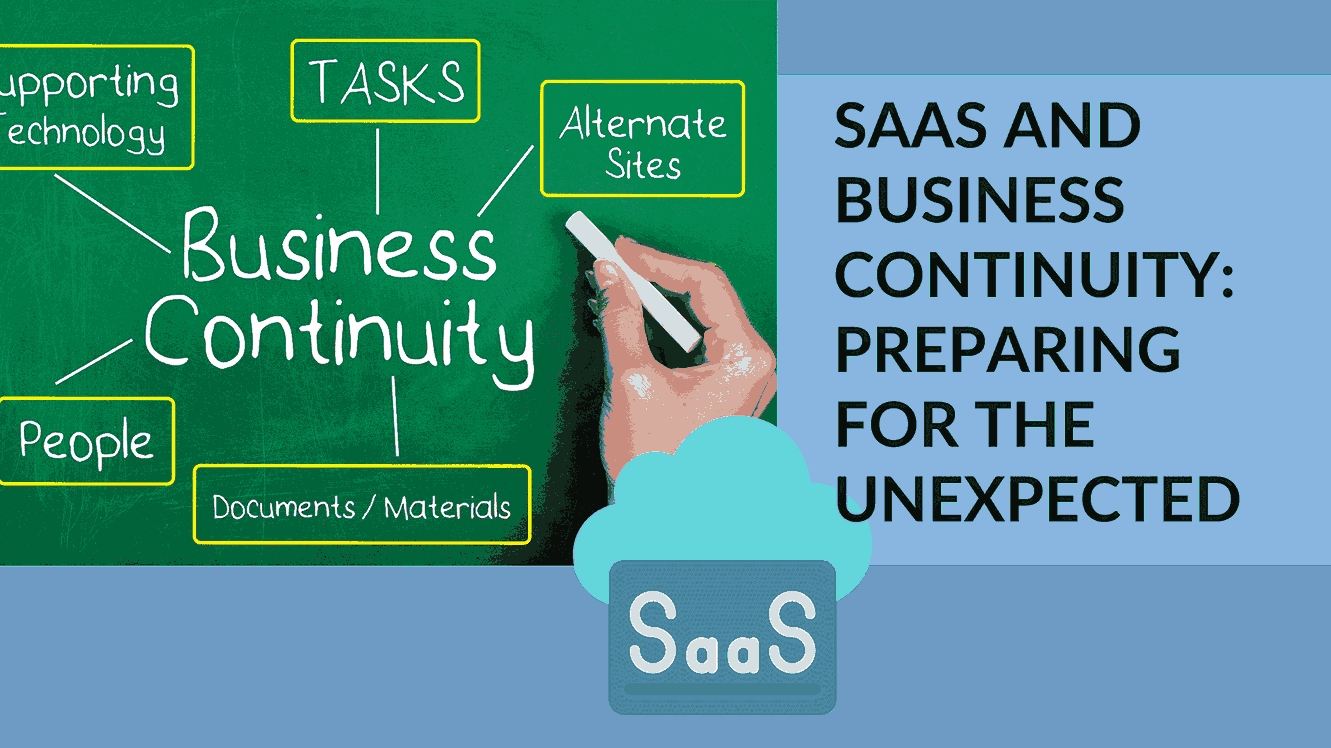SaaS and Business Continuity: Preparing for the Unexpected
- Data as a Service (DaaS) Software Marketing & Analytics


SaaS and Business Continuity: Preparing for the Unexpected
What is Business Continuity and Why is it Important?
In the dynamic world of modern business, ensuring the uninterrupted operation of essential functions is critical. Business continuity, as defined by experts, is an organization’s capability to maintain critical business processes during and after a disaster or disruptive event. This planning process establishes risk management procedures aimed at preventing interruptions to mission-critical services and quickly restoring full operational functionality to the organization. In an era of increasing uncertainty, business continuity is more important than ever.
The Basics of Business Continuity
The primary objective of business continuity planning is to keep essential functions operational during a crisis while minimizing downtime. It takes into consideration unpredictable events and potential threats such as natural disasters, fires, disease outbreaks, supply chain disruptions, cyberattacks, and other external hazards. Business continuity strategies are crucial for organizations of all sizes, ensuring they remain resilient in the face of interruptions.
Business Continuity in the Face of Threats
Downtime is unacceptable in today’s fast-paced business environment. The threats to business continuity are diverse, with some, like cyberattacks and extreme weather, becoming increasingly severe. According to Gartner, cyberattacks are becoming more sophisticated, making effective cybersecurity threat detection more important than ever. Hence, a well-defined business continuity plan is essential to address potential operational disruptions.
Saving Resources with Business Continuity
Strong business continuity is not just about resilience; it’s also about saving resources. Extended outages can lead to financial, reputational, and personal losses. Business continuity planning helps organizations avoid these losses by maintaining operational resilience and reducing downtime. A comprehensive business continuity plan provides organizations with the necessary tools to react efficiently to interruptions, ultimately saving money, time, and company reputation.
Business Continuity: Legal and Compliance
Business continuity might be more than a best practice; it can be a legal or compliance requirement, particularly in an era of increased regulations. Organizations must understand the regulations that affect them to ensure compliance. Therefore, adopting a business continuity plan aligns not only with best practices but also with legal obligations.
The Key Components of a Business Continuity Plan
A successful business continuity plan consists of several essential elements, including:
- Clear and Comprehensive Guidelines: Business continuity plans feature clear guidelines on maintaining operations. These guidelines ensure there is no ambiguity when it comes to executing business processes. They include contact information, steps for handling various incidents, and instructions on when to use the document.
- Defined Levels of Response: Not all functions are equally critical. A business continuity plan defines what is essential and what can return to normal later. Honesty about recovery time objectives and recovery point objectives is crucial.
- Collaboration and Transparency: Business continuity involves the entire organization, from top management to IT and security teams. Collaboration is vital for effective planning and execution, as it brings different perspectives and expertise to the table.
Key Components of a Business Continuity Plan
A business continuity plan comprises three key elements:
- Resilience: Organizations increase resilience by designing critical functions and infrastructures with potential disasters in mind. This includes data redundancy, staffing rotations, and maintaining surplus capacity to ensure essential services remain uninterrupted.
- Recovery: Rapid recovery is crucial to restoring business functions following a disaster. Setting recovery time objectives for different systems, networks, or applications helps prioritize what should be recovered first.
- Contingency: A contingency plan outlines procedures for various scenarios, including a chain of command that distributes responsibilities within the organization. It covers hardware replacement, emergency office spaces, damage assessment, and third-party vendor contracts for assistance.
Business Continuity Standards
Standards play a vital role in business continuity. The ISO 223XX series includes standards for business continuity and related activities, ensuring that organizations can implement best practices. The Business Continuity Institute (BCI) provides global business continuity standards and guidelines through its Good Practices Guidelines.
Business Continuity vs. Disaster Recovery
Like a business continuity plan, disaster recovery planning specifies an organization’s planned strategies for post-failure procedures. However, a disaster recovery plan is just a subset of business continuity planning.
Disaster recovery plans are mainly data-focused and concentrate on having adequate data backup and storing data in a way that makes it easily accessible following a disaster. Business continuity takes this into account but also focuses on the risk management, oversight and planning an organization needs to stay operational during a disruption.
Business Continuity Development
Business continuity planning starts with initiating the planning project. Business impact analysis (BIA) and risk assessment are essential steps in gathering information for the plan. They offer the following benefits:
- Business impact analysis: Conducting a BIA can reveal possible weaknesses, as well as the consequences of a disaster on various departments. The BIA report informs an organization of the most crucial functions and systems to prioritize in a business continuity plan.
- Risk assessment: A risk assessment identifies potential hazards to an organization, such as natural disasters, power outages, cyber attacks, and technology failures. Risks can affect staff, customers, building operations, and company reputation. The assessment also details what or who a risk could harm and the likeliness of the risks.
Business Continuity Management
It’s important to designate who will manage the business continuity program should a business disruption occur. It could be one person if it’s a small business, or it could be a whole team for a larger organization. Business continuity management software is also an option. Software — either on premises or cloud-based — helps conduct BIAs, create and update plans and pinpoint areas of risk.
Testing and Review
Testing is crucial to the success of a business continuity plan. It’s difficult to know if a plan is going to work if it hasn’t been tested. A business continuity test can be as simple as a tabletop exercise where staff discuss what will happen in an emergency. More rigorous testing includes a full emergency simulation. An organization can plan the test in advance or perform it without notice to better mimic a crisis.
Once the organization completes a test, it should review how it went and update the crisis management plan accordingly.
In conclusion, preparing for the unexpected in business continuity is crucial, especially when it comes to managing your SaaS stack. Subscribed.FYI offers a comprehensive platform that empowers freelancers, agencies, and teams to make informed decisions about SaaS tools. With the ability to compare, evaluate, and select the best options for specific requirements, Subscribed.FYI provides centralized information about SaaS tools, making it easier to navigate the complexities of subscription management. Additionally, Subscribed.FYI Deals offers exclusive member-only savings on 100+ SaaS tools, allowing users to unlock secret deals and save big, making it an invaluable resource for those looking to optimize their SaaS expenses.
For more information about Subscribed.FYI and to start enjoying the perks of secret deals and streamlined subscription management, visit Subscribed.FYI and Subscribed.FYI Deals. Take control of your SaaS expenses and empower your business with the ultimate subscription management solution.
Relevant products:





